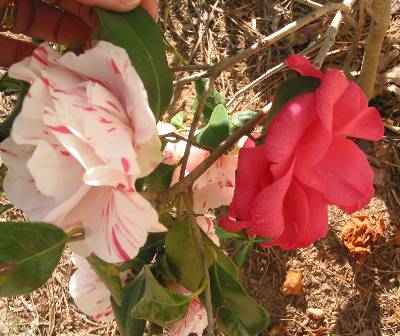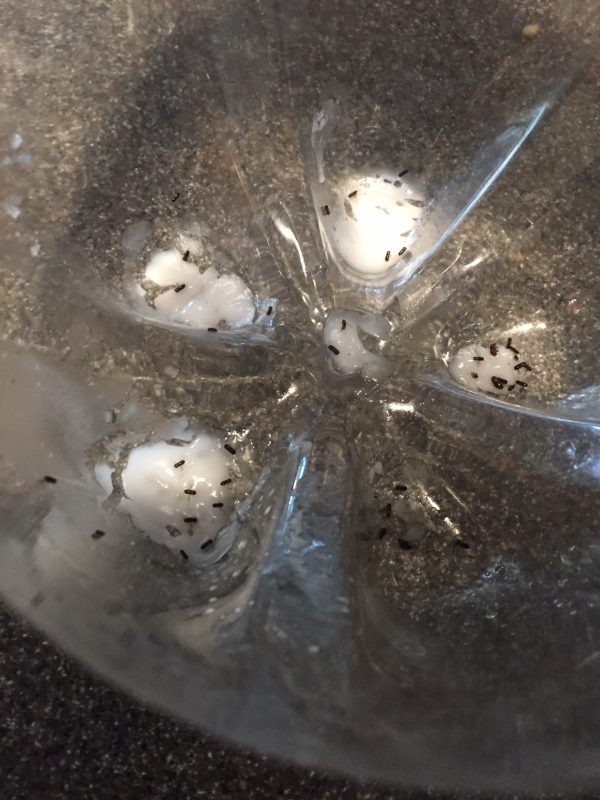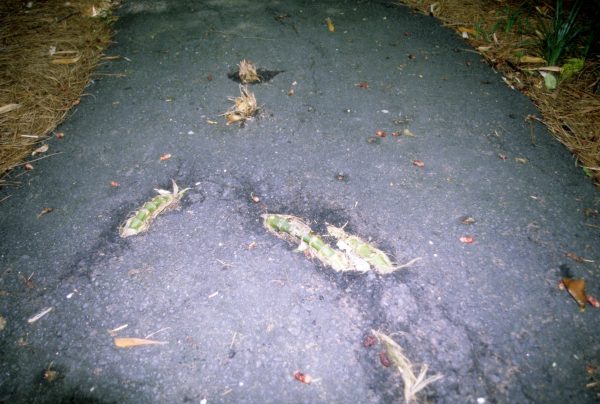Pesticide Toxicity to Earthworms
by Daryl Pulis, Mrs. Green Thumb
Once called the “intestines of the Earth” by Aristotle, earthworms are both indicators of soil health and help to improve the soil as they move through it. Earthworms tunnel deep within the soil, creating channels for air and water to pass through. As they tunnel, they bring up nutrients from below and carry organic matter from the surface, mixing it into the soil. Earthworms can
consume their own weight in organic matter each day, and Charles Darwin in his 39 years of studying earthworms, found that in a healthy environment they can create as much as 36,000 pounds of Nitrogen-rich castings per acre.
A soil rich in earthworms helps plants to grow. In home lawns, earthworms can also help prevent harmful thatch build-up as they consume dead roots and stems and mix soil into the thatch layer. This soil encourages microbial activity that helps break down the thatch even more quickly. Unfortunately, many of the things we do to create a green lawn can be harmful to earthworms.
Excessive applications of Nitrogen can reduce earthworm populations. Earthworms are generally intolerant of acidic soils (pH < 6.0). Soil samples can determine lime requirements and what kind of fertilizer is needed to maintain healthy turf. Many commonly applied fungicides and pesticides can damage earthworms too. Remember to treat only when necessary, using the least toxic product for the job. Use spot treatments rather than whole lawn applications where possible, and try to avoid applications when earthworms are most active near the surface. The following toxicity information for earthworms was obtained during a 3-year research project by the University of Kentucky entomology department. Common Name – Brand Name Low Toxicity (0% to 25% reduction)
• chlorothalonil – Bravo
• fenarimol – Rubigan
• fosetyl – Al Aliette
• iprodione – Chipco 20619, Rovral
• mancozeb – Dithane M-45, Manzate 200
• metalaxyl – Ridomil, Subdue
• myclobutanil – Nova, Rally
• propiconizole – Banner, Tilt
• tebuconazole – Folicur
• triadimefon Bayleton
• dicamba – Banvel
• dithiopyr – Dimension
• isoxaben – Gallery
• pendamethalin – Pre-M, Prowl, Herbicide 2
• prodiamine – Kerb
• 2,4-D 2-4,D
• trichlopyr Garlon
• azadirachtin – Margosan-O
• bifenthrin – Talstar
• cyfluthrin – Baythroid, Tempo
• fluvalinate – Mavrik
• isophenphos – Oftanol
• flurprimidol – Cutless
• mefluidide – Embark
Moderate Toxicity (26% to 50% reduction)
• chlorpyrifos – Dursban, Lorsban
• diazinon – Diazinon, Spectracide
• isazofos – Triumph
• trichlorfon – Proxol
Severe Toxicity (51% to 75% reduction)
• thiophanate – Fungo, Cleary-3336
• thiophanate-methyl – Topsin-M
Very Severe Toxicity (76% to 100% reduction)
• benomyl – Benlate, Tersan-1991
• bendiocarb – Turcam
• carbaryl – Sevin
• ethoprop – Mocap
• fonofos – Crusade, Dyfonate
• phorate – Thimet















